Facility and Equipments
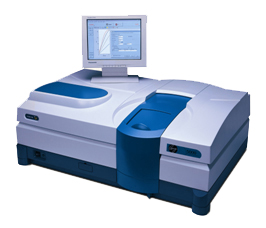
UV-Vis Spectrophotometer
The instrument used in ultraviolet-visible spectroscopy is called a UV/Vis spectrophotometer. It measures the intensity of light passing through a sample, and compares it to the intensity of light before it passes through the sample.
- Cary 5000, Varian
- S-2150, Scinco
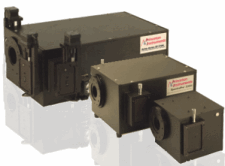
Photoluminescence Spectrophotometer
Photoluminescence spectroscopy is a contactless, nondestructive method of probing the electronic structure of materials. Light is directed onto a sample, where it is absorbed and imparts excess energy into the material in a process called photo-excitation. One way this excess energy can be dissipated by the sample is through the emission of light, or luminescence, which is called photoluminescence.
- SpectroPro 2300i, Princeton Instruments
- IK series He-Cd laser, Kimmon
- SVX 1450 xenon lamp, Muller
- Send inquiry to the member in charge of PL instruments
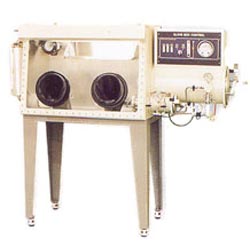
Glove Box
A glove box is a sealed container that is designed to allow one to manipulate objects where a separate atmosphere is desired. Built into the sides of the glovebox are gloves arranged in such a way that the user can place their hands into the gloves and perform tasks inside the box without breaking containment.
- With a mini antechamber, Woosung Vaccum

Microtome
A microtome is a sectioning instrument that allows for the cutting of extremely thin slices of material, known as sections. Microtomes are an important device in microscopy preparation, allowing for the preparation of samples for observation under transmitted light or electron radiation.
- MT-X Ultramicrotome with CR-X, Boeckeler Instruments, Inc.

Dip-coater
Dip coating is a popular way of creating thin films for research purposes. Uniform films can be applied onto flat or cylindrical substrates.
- KSV-D, KSV Instryments LTD

Spin-coater
Spin coating is a procedure used to apply uniform thin films to flat substrates. In short, an excess amount of a solution is placed on the substrate, which is then rotated at high speed in order to spread the fluid by centrifugal force.
- P6700 Series, Specialty Coating System, Inc.
- SPIN-1200D, Midas System Co.

Goniometer
A goniometer is an instrument that either measures an angle or allows an object to be rotated to a precise angular position.
- 100-00, Rame-Hart, Inc.

Microbalance
A microbalance is an instrument capable of making precise measurements of weight of objects of relatively small mass: of the order of a million parts of a gram.
- AX26 Comparator, Mettler Toledo

MHVE Evaporator (Carbon Coater)
The use of carbon films in Electron Microscopy with their low background signal and relatively good electrical conductivity is well known. A high vacuum evaporator with carbon rods is used to achieve these coatings, and still has preferential applications.
- Polaron E-6500, Quorum Technologies
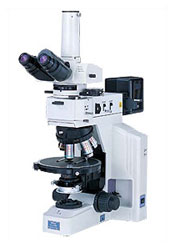
Polarizing Microscope
Polarized light microscopy can mean any of a number of optical microscopy techniques involving polarized light. Simple techniques include illumination of the sample with polarized light. Directly transmitted light can, optionally, be blocked with a polariser orientated at 90 degrees to the illumination.
- Eclipse E600 POL Microscope, Nikon
- FP900 Thermosystem, Mettler Toledo
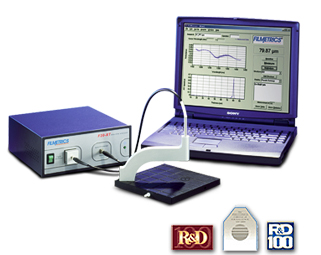
Thin-Film Analyzer
Thin Film Measurement System measures thickness and optical constants quickly. Analysis of the reflectance from the top and bottom of the film to be measured shows the thickness, the extinction coefficient and the index of refraction in about a second. Any smooth, transparent or thin film with minimal light absorption can be measured.
- F20, Filmetrics
- Thickness range: 15 nm ~ 100 μm / Wavelength range: 380 ~ 1050 nm
- Send inquiry to the member in charge of Filmetrics
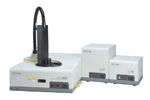
Dynamic Light Scattering (DLS)
Dynamic light scattering is a technique in physics that can be used to determine the size distribution profile of small particles in suspension or polymers in solution. It can also be used to probe the behavior of complex fluids such as concentrated polymer solutions.
- DLS-8000, Otsuka Electronics
- He-Ne Laser: 3 nm ~ 7 um
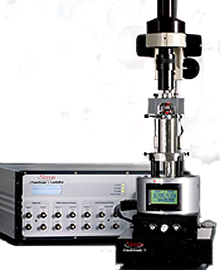
Atomic Force Microscope (AFM)
AFM is a very high-resolution type of scanning probe microscopy, with demonstrated resolution on the order of fractions of a nanometer, more than 1000 times better than the optical diffraction limit.
- Nanoscope V, Bruker (with Multimode 8)
- J scanner available (for using E scanner, contact to TLClab)
- Only for permitted users
- Send inquiry to the member in charge of AFM

Transmission Electron Microscope (TEM)
TEM is a microscopy technique whereby a beam of electrons is transmitted through an ultra thin specimen, interacting with the specimen as it passes through. An image is formed from the interaction of the electrons transmitted through the specimen.
- H-7600, Hitachi
- Resolution: 0.36 nm (point image) / Accelerating voltage: 40 ~ 120 kV
- Only for permitted users
- Send inquiry to the member in charge of TEM
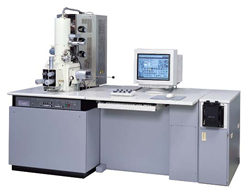
Field-Effect Scanning Electron Microscope (FE-SEM)
A SEM is a type of electron microscope that produces images of a sample by scanning it with a focused beam of electrons. The electrons interact with atoms in the sample, producing various signals that can be detected and that contain information about the sample's surface topography and composition.
- S-4300, Hitachi
- Resolution: 1.5 nm / Accelerating voltage: 15 kV
- Only for permitted users
- Send inquiry to the member in charge of FE-SEM
